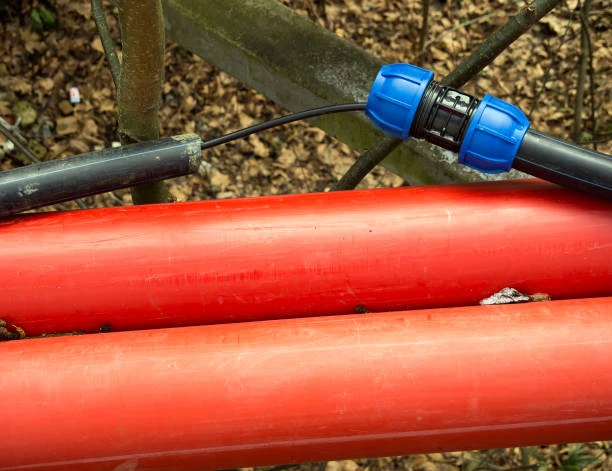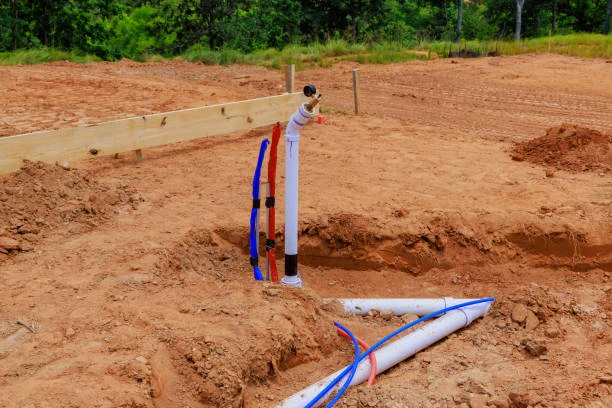HDPE pipes and fitting are increasingly being recognized as a vital component in firefighting systems. Their unique properties make them an ideal choice for high-pressure applications, ensuring effective water flow and reliability during emergencies. In this article, we will explore the features, benefits, and applications of high-pressure HDPE pipes and fitting in firefighting systems.
Understanding HDPE Pipes and Fittings
HDPE is a thermoplastic material characterized by its high strength-to-density ratio. When used in pipes and fittings, HDPE offers excellent resistance to corrosion, chemicals, and environmental stressors, making it suitable for various applications, including firefighting. The use of HDPE in firefighting systems is particularly beneficial due to its ability to handle high pressures without compromising structural integrity.
Key Features of High-Pressure HDPE Pipes and Fittings
1. Durability
One of the standout features of HDPE pipes and fitting is their durability. Manufacturers design these materials to withstand extreme environmental conditions, making them suitable for long-term use in firefighting applications.
2. Corrosion Resistance
Unlike traditional metal pipes, HDPE is resistant to rust and corrosion. This property ensures that the pipes maintain their integrity over time, even when exposed to harsh chemicals or water sources that may contain corrosive elements.
3. High Pressure Tolerance
Engineers design high-pressure HDPE pipes to handle significant pressures, making them ideal for firefighting systems that require quick and efficient water delivery. These pipes can withstand pressure ratings up to 16 bar or more, depending on the application.
4. Flexibility
HDPE pipes are inherently flexible, allowing for easier installation around obstacles and in challenging terrains. This flexibility is crucial in firefighting applications where access may be limited.
5. Lightweight
Compared to traditional piping materials, HDPE is lightweight, making transportation and installation more manageable. This feature can significantly reduce labor costs during installation.
Benefits of Using HDPE Pipes and Fittings in Firefighting
1. Cost-Effectiveness
The long lifespan and low maintenance requirements of HDPE pipes translate to cost savings over time. While the initial investment may be comparable to other materials, the durability and reduced need for replacements make HDPE a cost-effective choice in the long run.
2. Easy Installation
You can join HDPE pipes using various methods, including butt fusion and electrofusion, allowing for quick and efficient installation. This is particularly beneficial in emergency situations where rapid deployment is critical.
3. Resistance to Impact
HDPE’s resistance to impact means that pipes are less likely to be damaged during installation or maintenance. This feature is essential in firefighting applications where the reliability of the system is paramount.
4. Environmental Sustainability
HDPE is a recyclable material, contributing to sustainable practices in construction and emergency response systems. Manufacturers often focus on eco-friendly production processes, making HDPE a responsible choice.
5. Compatibility with Other Systems
HDPE fittings can easily integrate with existing firefighting systems and other piping materials. This compatibility allows for seamless upgrades and expansions, ensuring that systems can evolve as needed.
Applications of High-Pressure HDPE Pipes and Fittings in Firefighting
High-pressure HDPE pipes and fittings are utilized in various firefighting applications:
1. Fire Sprinkler Systems
HDPE pipes are widely used in fire sprinkler systems due to their ability to handle high pressures and deliver water effectively. Their corrosion resistance ensures reliable operation over time.
2. Fire Hydrant Systems
Many fire hydrant systems now incorporate HDPE pipes. These systems require robust piping solutions that can withstand the pressures of rapid water flow during emergencies.
3. Water Supply for Firefighting
Professionals commonly use HDPE pipes for the primary water supply in firefighting systems, ensuring that water remains readily available when needed. Their flexibility and durability make them suitable for both urban and rural environments.
4. Industrial Firefighting Systems
In industrial settings, companies use HDPE pipes for firefighting systems that require a reliable and efficient means of transporting water. Their resistance to chemicals and high-pressure tolerance makes them ideal for these environments.
5. Mobile Firefighting Units
Teams increasingly use HDPE pipes in mobile firefighting units, where flexibility and lightweight properties are crucial. These units can quickly deploy water in emergency situations, and HDPE pipes facilitate efficient operation.
Installation Considerations
When installing high-pressure HDPE pipes and fitting for firefighting systems, several factors must be considered:
1. Proper Sizing
Selecting the right diameter and pressure rating for HDPE pipes is critical. Designers must create the system to accommodate the expected flow rates and pressures during firefighting operations.
2. Joining Techniques
Choosing the appropriate joining method is essential for ensuring system integrity. Butt fusion and electrofusion are commonly used methods that provide strong, leak-free connections.
3. Regular Maintenance
While HDPE pipes require minimal maintenance, you should conduct regular inspections to ensure the system remains functional and free from obstructions.
4. Compliance with Standards
It’s important to ensure that the installation complies with local regulations and standards for firefighting systems. This compliance ensures safety and effectiveness in emergency situations.

Conclusion
High-pressure HDPE pipes and fitting are a crucial component in modern firefighting systems, offering durability, flexibility, and resistance to corrosion. Their ability to handle high pressures makes them suitable for various applications, from sprinkler systems to industrial firefighting units. As the demand for reliable and efficient firefighting solutions continues to grow, HDPE will play an essential role in ensuring safety and effective emergency response.
FAQs
- What are the pressure ratings for HDPE pipes used in firefighting?
High-pressure HDPE pipes typically have pressure ratings ranging from 10 to 16 bar or more, depending on the application. - Are HDPE pipes safe for use in fire systems?
Yes, HDPE pipes are safe and effective for use in fire systems, meeting industry standards for firefighting applications. - How long do HDPE pipes last in firefighting applications?
HDPE pipes can last over 50 years with proper installation and maintenance, making them a long-term solution. - Can HDPE pipes withstand extreme temperatures?
HDPE pipes can handle a range of temperatures, but specific limits depend on the grade used. They typically perform well within normal firefighting conditions. - What joining methods are used for HDPE pipes in firefighting?
Common joining methods include butt fusion and electrofusion, which create strong, leak-proof connections suitable for high-pressure applications.


















